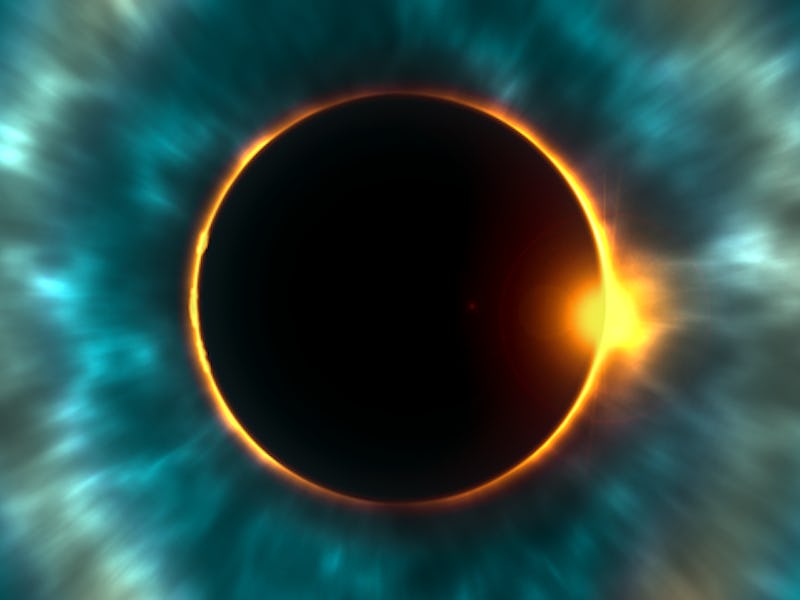NASA Just Dropped Its Most Comprehensive Eclipse Map Ever
No excuse for missing this once in a lifetime opportunity.

The United States is guaranteed for the much-anticipated total eclipse on August 21, 2017, and NASA is here for the party: They’ve put together an incredibly detailed, interactive map, complete with vantage points where people can camp out and sky gaze the entire duration of the eclipse.
In fact, NASA’s interactive map is so precise, it offers exact coordinates, offering some cushion between zones of a path of totality, where the ultimate eclipse view resides.
Roadtripping to southern Illinois’s Shawnee National Forest for the big day seems to be the amateur astronomer’s recommended plan of action from NASA, with a promised view of the eclipse for a whole 2 minutes and 41 seconds, longer than anywhere else in the country.
This map is like nothing NASA has ever done before for the very simple reason that it is so difficult to calculate all of the right conditions. It takes into account the obvious: tracking the Earth and the moon’s orbit around the sun, so that they can nail down exactly when the moon will eclipse the sun and be visible over the United States. NASA refers to the wisdom of 19th-century astronomers Friedrich Wilhelm Bessel and William Chauvenet, who developed a formula for creating eclipse maps before computers and calculators ever even existed.
However, that formula only takes scientists so far because it’s based off the idea that all observers would be at sea level and that the moon is a perfectly smooth orb. But, the lunar path stretches from the Rocky Mountains to the Appalachian Mountains, locations that are obviously not at sea level; the moon’s craters and valleys make it quite obviously also not a smooth rock.
So NASA combined detailed topography maps from satellite images of Earth and elevation data of the moon from NASAs Lunar Reconnaissance Orbiter, or LRO. The result: the most precise map to date. “We couldn’t have done visualizations like this even 10 years ago,” said NASA visualizer Ernie Wright, a scientist at the Goddard Space Flight Center. “This is a confluence of increasing computing power and new datasets from remote sensing platforms like LRO and the Shuttle Radar Topography Mission.”
But, as scientists point out, it’s all for naught if you don’t have clear skies, making it very important that you watch weather conditions in the days before the eclipse.
If you’re still wondering why NASA is making such a big deal out of this eclipse, it’s probably because very few in our lifetime have ever seen one quite this grand. The last total solar eclipse was almost a century ago on June 8, 1918, stretching from Washington to Florida (about the same path as the one coming up in August 2017). Back then, we didn’t have the International Space Station, let alone a map that could show us exactly where we could watch as the events unfold. Back then, observers might have gotten a quick glimpse.
Eclipses have a time-honored history among humans, especially ones who believe the sky holds the fortunes of the future. Ancient Chinese mythologists believed that eclipses were heavenly signs for the emperor, weighing so much importance on these predictions that they would murder their astrologers when they were wrong.
But while NASA still leans on these ancient methods for predicting eclipses, they really couldn’t care less about how it may or may not affect your horoscope. Yes, the eclipse is an incredible event that reminds us all how infinitely small we are compared to the rest of the universe — and that’s magical — but to use the event to believe you’ll find your true love is a bunch of hooey, according to NASA.
“Astrology is something else,” NASA says. “It’s not science. No one has shown that astrology can be used to predict the future or describe what people are like based on their birth dates.”
So, for now, just sit back and enjoy the show and don’t forget to wear your super cool pair of special-purpose solar filtering “eclipse glasses” while you’re at it.